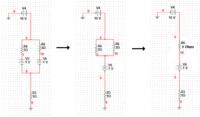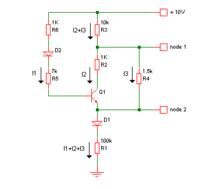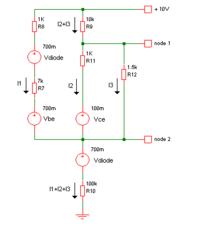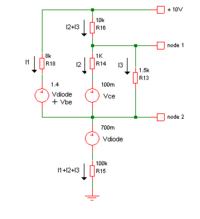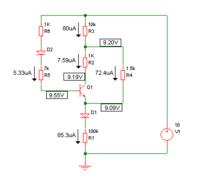sachinsk
Newbie level 4
Hi,
I want to calculate current through the circuit present in attached image.
V5,V6 are the voltage drops of diodes, used directly voltage drops just for easy calculation/representation.
I need formula or the way to calculate current through this circuit.
The parallel combination troubling me a lot.

I want to calculate current through the circuit present in attached image.
V5,V6 are the voltage drops of diodes, used directly voltage drops just for easy calculation/representation.
I need formula or the way to calculate current through this circuit.
The parallel combination troubling me a lot.


